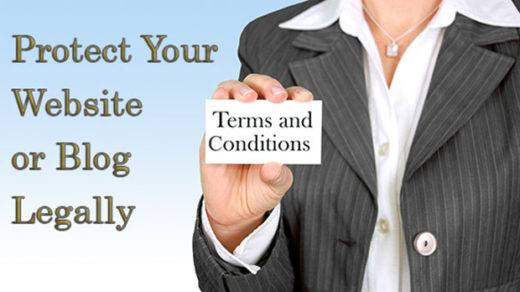If you are looking to start your own small business there are several different options available to you. Among them are options to form an LLC, an S Corp or a C Corp. You can start working as a Sole Proprietor. Or you can choose to straight-up freelance using your own name, without creating a formal business structure of any kind. In this article we will discuss how to form an LLC, and generally how to start freelancing. (Note: this list is not exhaustive and I am not speaking from a legal point of view: this is just my own experience and how it went down when my husband and I formed our LLC.)
General Steps to Getting Started as an LLC:
Follow your interests and passion.
1) This probably goes without saying, but first you have to decide what kind of business or what type of freelancing that you want to engage in. : ) This should play to your strengths and to your interests and ideally be something you’re passionate about. It wouldn’t be wise just simply choose a career path based upon what you think is popular or trending at the moment. If being an entrepreneur is truly right for you… well, you’ll just know. Or at least that’s what is was like for me… I didn’t really have a choice. All other paths left me feeling empty and hollow, and I it wasn’t until I set my mind on becoming a freelance developer and designer that I began to experience a real sense of peace. I remember reading somewhere that being an entrepreneur is something that chooses you – not the other way around.
And having formed an LLC myself in 2018, I can tell you from experience that at times you will feel like you are married to your business. It is a real, full-out commitment and you need to decide to be in it for the long haul. So if you are not passionate about what you are doing in your business it will most likely not last.
Name your new freelancing business.
2) Once you know the type of work you would like to do, you need to decide on a name for your business. Ideally this should be something that means something to you on an emotional level, and that truly represents the heart of your business. You could use your own personal name (Angela Bronson Design or something of that nature) or come up with a more creative and descriptive name for your business.
With my husband and I were throwing around ideas for our business name, one idea that we kept coming back to was – we wanted to use something that had to do with dragons. The dragon idea has great emotional appeal to for us, since our daughter has been creating wonderful dragon illustrations since back when she was 6 years old, and as a family we were and are really into mythology and the whole fantasy genre. Plus of course we wanted to say something descriptive about what we actually did for a living; that’s why we added the word “code” in front of “dragon”.
Another consideration when deciding upon a business name is making sure you have some important keywords right there in the name. This will help your business to rise up higher in the search engine results pages (SERPs). It also becomes more meaningful for a potential customer, when viewing their search results, to see something like “Kathy’s Physical Therapy and Massage LLC” than to see “Kathy Smith, LLC”.
Do your research.
3) Now this next piece is really important: once you’ve settled on a name for your biz, you have to do your research and make sure that it’s actually available. Take as long as you need with this part of the process. I took literally a month to research!
This involved running a search through every search engine that could find, looking through trademark databases, etc., to make sure that our business name wasn’t already taken. It would stink to be in business a year or two and then find out the hard way that somebody is already using the exact same name as you. My husband and I were at a networking event recently, where we met an accountant acquaintance, and noticed the name of her business when she passed us her business card. For the heck of it, we decided to search on her name. It took all of 5 minutes before we discovered that someone across the country already was using the same exact business name (and was in the same line of work)… so even a little due diligence here goes a long way!
If after searching for your business name, it comes up clean, next you need to head over to a few databases just to be sure your business name has not already been trademarked or copyrighted. You can check out sites like LegalZoom, Trademarkia, or WHOIS. But one database you absolutely should make sure to check is the US patent and Trademark office’s, by using their trademark search tool. Just follow the instructions on the USPTO site – the process is pretty self-explanatory.
Also be sure to check with your state’s Secretary of State by either calling or visiting their website, to make sure that no one is doing business in your particular state with the same business name as you.
3a) This one is optional: think of a snappy and memorable tagline. I spent way too much time on this during the early stages of forming my business. After wracking my brain to try and come up with a tagline that would relate to my business name and actually say something to my potential future clients, I thought of “Ignite Your Imagination.” This seemed perfect! It related to dragons (indirectly) and it also spoke to the creativity my business could lend to our customers. Unfortunately, after printing up a few hundred business cards – with tagline included – I discovered that the exact phrase was already trademarked (ugh!)
Key takeaway: also search through trademark databases to see if your chosen tagline is available or not.
Make your new business legal with your state.
4) Consult with a lawyer or accountant for advice on whether or not to incorporate and turn your venture into a formal, legal business. If the answer is ‘yes’, then go ahead and register your shiny new business with your local and state governments.
For me this was a surprisingly quick and painless process: I submitted the form via my state’s Secretary of State website, and paid the nominal fee on February 26 and heard back from them on March 5 – when they sent me email confirmation and a Certificate of Organization. Nice!
Disclosure: There are affiliate links below. We only recommend products, brands or services that we are personally familiar with and are very happy with!
The next advisable step in the formation of your business is to put into place some type of formal, legal operating agreement. I recommend looking into this comprehensive, easy to customize LLC Operating Agreement template. An LLC operating agreement is a must if you want to protect your new LLC legally, and this template is an excellent choice. It was carefully crafted by an experienced lawyer who writes contracts for a living, it contains 11 pages of critical legal provisions, and ultimately will serve to separate out your personal assets from your business assets.
Make your new business legal with the Federal government.
5) Once your business has been approved by your state government, next you need to square it with the Federal government, and for tax purposes, apply for an EIN (aka an Employer Identification Number).
The IRS website includes clear instructions on how to apply online or via fax, mail or phone. Applying for an EIN is free and also surprisingly painless – and I received my EIN the same day I applied for it.
Get started networking.
6) At this point it would be a good idea for you to get plugged into your local community and join a Chamber of Commerce (or two) in your area. My husband and I joined three local Chambers, and were struck by how inviting and supportive this community really is. We attend events such as “Business After Hours” and training classes, and joined a Leads group. We were assigned a Chamber mentor right off the bat who made us feel welcome and valued.
We also joined our local chapter of SCORE. Through SCORE you can be paired up with a mentor, take relevant classes, workshops and webinars, and generally be privy to a host of great information on starting and growing your new business.
There are many other ways to network and connect with a support system of other entrepreneurs or freelancers. Look through meetup.com to find a local networking group (I found gobs of them in my area), attend conferences, give lectures, and so much more.
One thing I’ve noticed about creating local connections is that it seems to (understandably) be much more critical for traditional businesses (that have an actual office location), than for someone who can work virtually such as a freelance web developer.
Separate your personal finances from your business finances.
7) In my opinion (and in the opinion of many business experts), you should keep your business finances and your personal finances completely separate. An important next step is to set up your business bank account. Then set up some other method for your customers to pay you, such as PayPal or Stripe. You also have the option here for customers to pay you via credit card, check or even cash.
To help you along the lines of keeping your personal and business life separate, I recommend looking into this comprehensive, easy to customize LLC Operating Agreement template by A Self Guru. This LLC operating agreement is a smart choice if you want to protect your new business legally. It was carefully crafted by an experienced lawyer who writes contracts for a living. It contains 11 pages of critical legal provisions, comes with easy to follow instructions on how to customize the template – and is backed up with lifetime updates and support. This template will help you to separate out your personal assets from your business assets.
Although not ‘required’, I would also recommend getting started with an invoicing platform, so you can keep invoices, customer information, project details, etc. all in one place. We use Zoho Invoice and are quite happy with it – and we used it completely free for a long time, until we went over the 5-client limit.
Outline a plan for the future of your business.
8) Write up a short Mission Statement (one or two paragraphs max). Don’t spend too much time analyzing this – it should come from the heart. Then create a Business Plan. This could be a concise one-pager or a much longer and more detailed document.
Next create a Marketing Plan. This should include things such as your target market, what makes your business unique, how you plan on pricing your goods or services, how you plan on promoting your business (Facebook, Instagram, door-to-door, etc). And they say (whoever ‘they’ is) that you’re also supposed to have an Exit Plan for your business. Guess I’m a little superstitious but I feel a little icky thinking about this, so I’ve been putting this one off…
At the beginning stages of your business, you won’t have everything completely worked out, so don’t sweat all of these documents and plans too much. You can and should be developing and refining these over time, as you gain more experience and clarity.
Choose a domain name and get your business online.
9) On to the fun stuff! At this time (if you haven’t already), you should choose a domain name and get ready to set up and create a new business website. Bluehost is a leading website hosting company that has its own domain lookup tool, so you can type in your domain (website or blog name) of choice then click the “check availability” button to see if its already taken or not. (I’m an affiliate for Bluehost ’cause I’ve hosted several websites with them – including this one – and have been very satisfied with their hosting, affordability and customer service).
Choosing a website domain was a no-brainer for me, as I mainly needed to get the words “code” and “dragon” somewhere into our domain name. And the added “tech” at the end was simply because just “codedragon” was already reserved. As with domain name suggestion tools and generators, there are also numerous websites and platforms out online, where you can see if your domain of choice is available or not. When I started to set up our business website on Bluehost, it was quick and easy to check right through the Bluehost interface to see if a domain was still available.
If you’re thinking about starting a blog or creating a new website – for yourself or for a client – the first place to start is with choosing Bluehost.
Once you have secured and paid for a business domain name (url, web address… whatever you want to call it), then it’s time to create a website, and decide upon your brand colors, fonts, imagery, etc. What kind of a mood, look & feel and general vibe would you like your website to give off? Just make sure, when crafting your brand style, that you match it to your business itself. Ex: primary colors are often used on daycare websites and similar sites aimed at children. Financial websites often employ a more subtle color palette using soft blues, greens and grays.
If you’re thinking about starting a blog or creating a new website and have chosen to build it on the WordPress platform, then you should consider a WordPress theme that is truly versatile and fun to work with: Divi from Elegant Themes. I have built a few websites using Divi and had a great time working with it! I felt like this theme suited my work style, with the bright colors, easy to understand interface and its highly visual setup. By visual I mean you don’t need to know much code at all to create a blog or website using Divi, because of the Divi Visual Editor and how it’s all set up in a very WYSIWYG sort of way.
Design or commission a logo and business card.
10) At this stage would be a good time to come up with a logo design and create a business card (or hire a designer for these tasks). Then get out there and start letting everybody you know about your new business and start promoting it!!
Website design and branding, coding and development are our business specialty, so please give us at Code Dragon Design & Development a shout if you ever need any of the above items for your business!
For more information read the full disclaimer here.
What was your experience like, in starting freelancing or forming your own small business? Please let us know in the comments!







